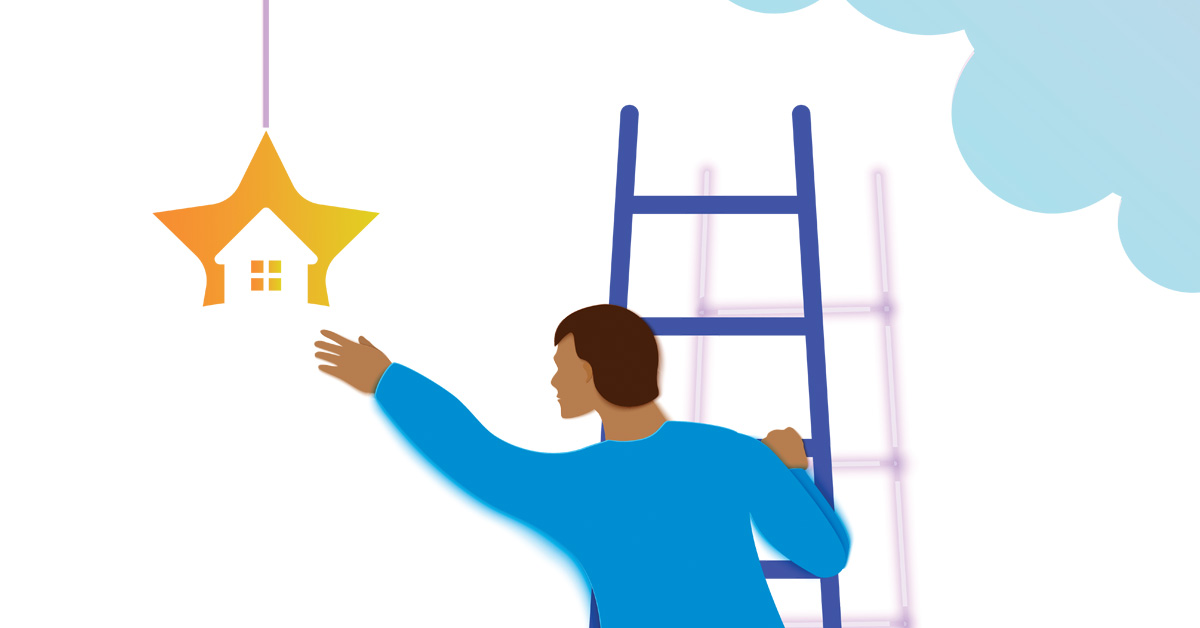Homeownership has always been an essential part of the American dream, but in places such as California, it has grown out of reach due to high home prices and rising interest rates. The median home price in California is nearly $800,000, making it one of the most expensive markets in the country.
A new shared appreciation program is helping more Californians achieve their dream of homeownership. The California Dream for All program recently made headlines when it received more than $300 million in applications in only 11 days and paused new applications due to high demand. The program is designed to help low- to middle-income families afford the upfront costs of purchasing a home in the state.
“California used this program as a replacement for downpayment assistance. The product could also replace the typical cash-out refinance transaction.”
By providing a new way to finance homeownership, the program is helping more people achieve the American dream. This is a public version of private home equity investment (HEI) programs, which allow homeowners or buyers to sell a future share of their home’s value in exchange for a lump sum of cash now. This sum needs to be repaid after a certain amount of time, or when the homeowner refinances or sells.
The success of the Golden State’s program has raised questions about how these products work and how future use cases can be implemented. Mortgage originators will want to understand how this financing mechanism works and what it could mean for their clients.
Accessing equity
Home equity investment programs, also known as home equity agreements, are a fairly new financing option that allow homeowners to access or sell their home equity without taking out a traditional home equity loan or line of credit. Unlike traditional home equity loans, HEI programs do not require monthly principal or interest payments.
In a purchase transaction, this cash is used as part of the downpayment. These programs are very appealing to any homeowner who wants to manage cash flow. HEI agreements typically have a term of 10 to 30 years, meaning the homeowner will probably refinance or sell the property prior to the agreement coming to full term. Home equity investments can be more expensive, however, with the homeowner needing to repay their initial lump sum plus a significant percentage of any future increase in home value.
California Dream for All is a public example of this product in use, but several private companies are now offering HEI programs across the U.S. These companies provide homeowners with alternatives to traditional home equity loans. It’s also worth noting that some private investors are securitizing these HEI programs. These are typically second liens that appear on title but do not appear anywhere on a credit report.
Rising popularity
These programs are becoming increasingly popular as more people are looking for alternative financing options. Home equity investment programs benefit homeowners in multiple ways. They allow homeowners to access their home equity without taking on debt and they provide a new way to finance homeownership.
These programs can also help address housing affordability issues, as they allow more people to afford homes in expensive markets and can spark the markets as interest rates continue to climb. On a purchase transaction, the ability to access an HEI program for a downpayment could result in significantly lower monthly payments.
Not only would the loan amount be lower, but it is likely that the new loan would no longer require mortgage insurance. In some cases, this could lower the monthly payment by hundreds of dollars a month or more. These programs help current homeowners too. A homeowner can quickly gain access to funds with reduced requirements, which may be very beneficial in the case of a family medical emergency or any type of sudden shock.
Mortgage alternative
Thousands of homeowners are using these programs each year. And the demand is expected to continue to grow in the coming years.
The HEI product has many potential uses in the near future. California used this program as a replacement for downpayment assistance. The product could also replace the typical cash-out refinance transaction.
Any home improvement project could benefit from an HEI alternative financing product. Accessory dwelling units or ADUs, solar panels, pools, garage conversions or any other major home improvement project could be paid for via home equity and no monthly payments. These programs have the potential to revolutionize the housing industry by providing the first wide-scale viable alternative to a traditional mortgage. ●
Author
-

Sundance Monty Brennan is the vice president of revenue at Nada and oversees sales in North America. Nada is an investment, financing and banking platform that aims to redefine how people access real estate assets. Brennan’s writing focuses on proptech, fintech and blockchain technologies, drawing on 20 years of financial industry experience. He also has advised on projects on the Algorand cryptocurrency blockchain. Connect with Brennan at linkedin.com/in/sundancebrennan.
View all posts






